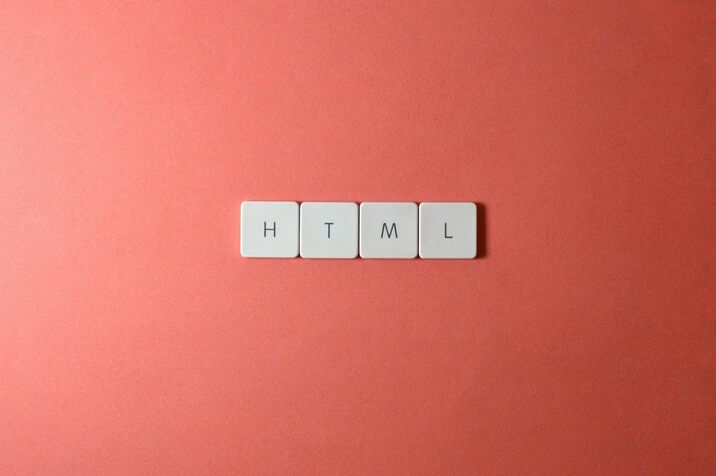
The field of front-end development is constantly changing as new best practices and technologies appear regularly. These updates for front-end developers are essential to keep up with the latest technologies. Front-end developers must keep up with these updates to remain competitive and provide outstanding user experiences.
As a front-end developer, you are in charge of creating the user interface, which is the area of a website or application that people interact with directly. It is crucial to guarantee a seamless customer experience.
These updates lead to more dynamic interactions, better scalability, better user experiences, and many other advantages.
This post will examine some of the most notable updates for front-end developers impacting the tech field.
RELATED POSTS
- 10 PROVEN PRACTICES FOR MOBILE APPLICATION DEVELOPERS
- 7 BEST BENEFITS OF A WEBSITE FOR SMALL BUSINESSES
- 7 GAME-CHANGING UPDATES FOR FRONTEND DEVELOPERS
- MASTERING WCAG 2.1: A DEVELOPER’S GUIDE TO BUILDING ACCESSIBLE WEB EXPERIENCES
Who Are Front-End Developers?
Front-end developers use coding languages like HTML, CSS, and JS to convert visual ideas into valuable and engaging web experiences.
Front-end developers design the user experience by creating dynamic and aesthetically pleasing user interfaces on websites and web applications. They bridge the gap between design and functionality and ensure that the user interface is aesthetically pleasing, simple to use, intuitive, and flawlessly connected to the application logic at its core.

What Is Front-End Development?
Front-end development entails creating the user-facing elements of a website that are visible to visitors. It aims to make websites and user interfaces (UI) dynamic and aesthetically pleasing. Front-end development is the foundation of designing and implementing a website’s or online application’s user interface (UI) and user experience (UX).
Skills For Front-End Developers
Front-end development requires a broad range of abilities to design captivating and user-friendly digital experiences effectively. The following are important areas of expertise:
Fundamental Technologies:
- HTML: Understanding HTML is essential for defining elements, organizing web content, and building web page foundations.
- CSS: Strong CSS abilities are necessary to provide a consistent and aesthetically pleasing user interface, regulate visual appearance, and style web pages.
- JS: A solid understanding of JavaScript is required to add dynamic behavior, interaction, and sophisticated functionality to online applications.
- Libraries and Frameworks: Understanding well-known JavaScript frameworks such as Vue, Angular, and React is advantageous when creating intricate and manageable web apps.
Processes of Development:
As a front-end developer, you need to be familiar with the development process of front-end development.
- Version Control (Git): Knowledge of Git is essential for code tracking, collaborative development, and codebase integrity.
- Build Tools: You need to know the tools for task automation, asset optimization, and development workflow optimization, such as Webpack, Gulp, or Grunt.
- Cross-Browser Compatibility: Ensure your websites work consistently across various browsers and devices.
- Accessibility: A thorough understanding of web accessibility standards (WCAG) is necessary to build accessible web experiences for all users, including those with impairments.
- Speed Optimization: Providing quick and responsive user experiences requires understanding methods for improving website speed, such as code minification, image optimization, and lazy loading.
- API Integration: In contemporary web development, the capacity to interface with several APIs to retrieve and present data from outside sources is becoming increasingly crucial.
Soft Skills:
Another area of expertise for front-end developers is soft skills.
- UI/UX Principles: A fundamental comprehension of UI/UX design principles guarantees a user-centered approach to development and promotes productive collaboration with designers.
- Solving Issues: Strong problem-solving abilities are required for debugging code, troubleshooting problems, and devising innovative solutions to development challenges.
- Time Management: Front-end developers need to know how to manage their time effectively because of the workload usually on them.
By honing these skills and abilities, front-end developers can successfully contribute to developing captivating, intuitive, and high-performing web apps.
7 Game-Changing Updates For Front-End Developers
1. Responsive Web Design 3.0
Responsive Web Design (RWD), or Web Design 3.0, is a substantial advancement in website creation and design. This cutting-edge method guarantees that websites work flawlessly on all platforms, including PCs, tablets, and smartphones, without needing separate versions or manual modifications.
In today’s multi-device world, websites must be able to adjust to a wide variety of screen sizes and resolutions.
Features:
- dividing layouts into reusable parts that are readily changed and reconfigured to accommodate various screen sizes and orientations is known as modular design
- utilizing strong CSS elements like Flexbox and Grid Layout to produce responsive and dynamic layouts with more control and flexibility
- giving top priority to the user experience on all platforms, guaranteeing the best possible readability, usability, and performance on PCs, tablets, smartphones, and other devices.
Advantages:
- Improved user experience: Offers a dependable and pleasurable user experience across all platforms, increasing user engagement and satisfaction.
- Increased conversion rates: By guaranteeing a smooth and intuitive experience across all platforms, RWD encourages users to take desired actions (such as purchasing or subscribing to a newsletter).
- Improved visibility in search results: Search engines prefer mobile-friendly websites in search results, increasing organic traffic and visibility.
- Enhanced customer satisfaction: By adopting Web Design 3.0 concepts, businesses can improve customer satisfaction, establish a strong online presence, and spur economic growth.
2. Progressive Web Apps (PWAs)
PWAs preserve the simplicity and accessibility of web-based solutions while enabling developers to produce robust and captivating web experiences.
By utilizing contemporary web technologies and APIs, PWAs combine the functionality and performance of native mobile apps with the accessibility and discoverability of web pages.
Features:
- Fast and reliable performance: PWAs load rapidly and guarantee a seamless and consistent user experience even on unreliable networks.
- Offline functionality: By enabling offline access to essential features, service workers let consumers engage with the app even when they aren’t online.
- App-like experience: When placed on a device’s home screen, PWAs provide a recognizable and easy-to-use interface comparable to native apps.
- Deeper user engagement: Thanks to features like background syncing and push alerts, developers can provide consumers with timely, personalized updates.
Advantages:
- Improved user experience: PWAs have offline capabilities, push alerts, and background synchronization, which provide a responsive and seamless user experience even when there is sporadic or limited internet connectivity.
- Cross-platform compatibility: Developers can reach a larger audience by providing a uniform experience across several platforms and devices using a single codebase.
- SEO: PWAs are search engine friendly and frequently appear higher in search results, which raises their visibility and brings in more organic traffic.
- Cost-effectiveness: It may be less expensive to create and manage a single PWA rather than distinct native apps for every platform.
- PWAs are a strong substitute for conventional web and mobile development methodologies and significantly influence trends.
By utilizing PWA technology, developers can produce high-performing, user-centric, and captivating applications that offer remarkable user experiences on all platforms.
3. Motion and Micro Interactions
Front-end developers are now using motion and micro-interactions to improve the user experience. Subtle animations and transitions make interactions more engaging and natural, in addition to being aesthetically pleasing.
Dynamic animations give user interfaces vitality, making them more visually appealing and captivating. A weather app that uses animated droplets to depict rain is an example.
These updates improve innovation for front-end developers. They enhance the visual appeal of websites and applications and increase user engagement.
Advantages:
- Animations: Animations give depth and visual interest, enhancing the user interface’s dynamic and pleasurable qualities. They can be used for anything from subtle hover effects to seamless page transitions.
- Micro-interactions: Micro-interactions make the user experience more intuitive and fulfilling by providing visible feedback on user actions such as button clicks, form submissions, and page loads.
- Leveraging tools: Front-end developers can construct and integrate complex animations and micro-interactions into their projects using libraries like GSAP (GreenSock Animation Platform) and Lottie.
4. Voice User Interfaces (VUIs)
Voice user interfaces (VUIs) are a new era of user interaction brought about by the popularity of voice assistants such as Siri, Alexa, and Google Assistant. Because they allow users to interact with websites and applications more hands-free and easily, VUIs are increasingly being integrated into web development.
By integrating VUI features into their web apps, front-end developers can create more engaging, inclusive, and user-friendly digital experiences that meet the changing needs of their audience.
Advantages:
- Improved accessibility: VUIs enhance accessibility for users with disabilities, such as motor restrictions or visual impairments.
- Better user experience: Voice commands simplify tasks and lower friction by providing a more organic and intuitive means for people to engage with digital interfaces.
- Enhanced engagement: VUIs can promote higher levels of user loyalty and satisfaction by producing more dynamic and captivating user experiences.
- Developments in technology: The accuracy and dependability of voice-based interactions have increased due to recent developments in speech recognition technology, which makes VUI integration more practical and efficient.
5. Static Site Generators (SSGs)
As the name implies, a static website is a fixed, unalterable object. Until the developer makes intentional changes, it stays the same after it is created and uploaded to a server.
The need for quick, safe, and scalable websites has led to a renaissance in the use of static site generators (SSGs). The demand for high-performance websites is pushing developers to continue using SSGs like Jekyll, Next.js, and Gatsby.
These technologies expedite development by producing static HTML, CSS, and JavaScript files during the build process and eliminating the requirement for server-side processing. This strategy results in quicker loading times and better website performance.
Advantages:
- Loading speed: Since SSGs create pre-built static pages, your website loads instantly without waiting for server-side processing.
- Scalability: Your site can handle massive traffic without crashing. Static files are easy to serve, even to a large audience.
- Low hosting costs: You don’t need expensive servers. Many static sites can be hosted for free on platforms like GitHub Pages or Vercel.
- Developer efficiency: SSGs streamline the process by automatically generating pages during the build phase, so developers can focus on coding instead of worrying about servers.
- Excellent performance for dynamic content: APIs help SSGs fetch dynamic data when needed, seamlessly blending static and dynamic worlds.

6. Low/No Code Development
Low-code/no-code development platforms are quickly becoming popular in front-end development. These platforms enable non-technical consumers and developers to construct applications with little to no traditional coding. They reduce the need for complex coding by allowing users to build apps using drag-and-drop capabilities and visual programming approaches.
Advantages:
- Accelerated development: Low-code/no-code platforms speed the development process by allowing developers to create applications using visual interfaces, drag-and-drop components, and pre-built templates.
- Enhanced efficiency: When repetitive operations are automated and simplified, applications are developed more quickly and have a shorter time to market.
- Decreased development costs: Low-code/no-code platforms reduce development costs by requiring less substantial coding and specialized developer knowledge.
- Enhanced accessibility: These platforms democratize application development, enabling anyone with little to no coding knowledge to create and implement applications.
7. Web Assembly (Wasm)
WebAssembly (Wasm) was created to run code effectively in web browsers. It allows languages like C/C++, C#, and Rust to run in the browser with almost native performance.
Due to this interoperability, developers can now create intricate and demanding apps, such as games and interactive multimedia experiences, that were previously impossible.
This innovative technology makes it possible to create complex online apps and games that previously required a lot of processing power.
Wasm is quickly becoming a vital tool for front-end developers.
Advantages:
- Boosts application performance: Enables web browsers’ computationally demanding functions much faster and more efficiently.
- Makes desktop-like experiences available online: It allows developers to create sophisticated games and applications previously constrained by web browser speed.

Conclusion
Front-end development constantly changes, and several significant developments will influence web experiences.
It’s important to note that these updates for front-end developers help developers produce creative and captivating web experiences that surpass user expectations.
All of these updates are necessary for front-end developers to learn and adapt on the go.
Which game-changing update will you be willing to adopt? Let us know in the comment section.
READ MORE: HOW TO BUILD A FULL-STACK WEB APPLICATION WITH PYTHON AND VUE.JS

